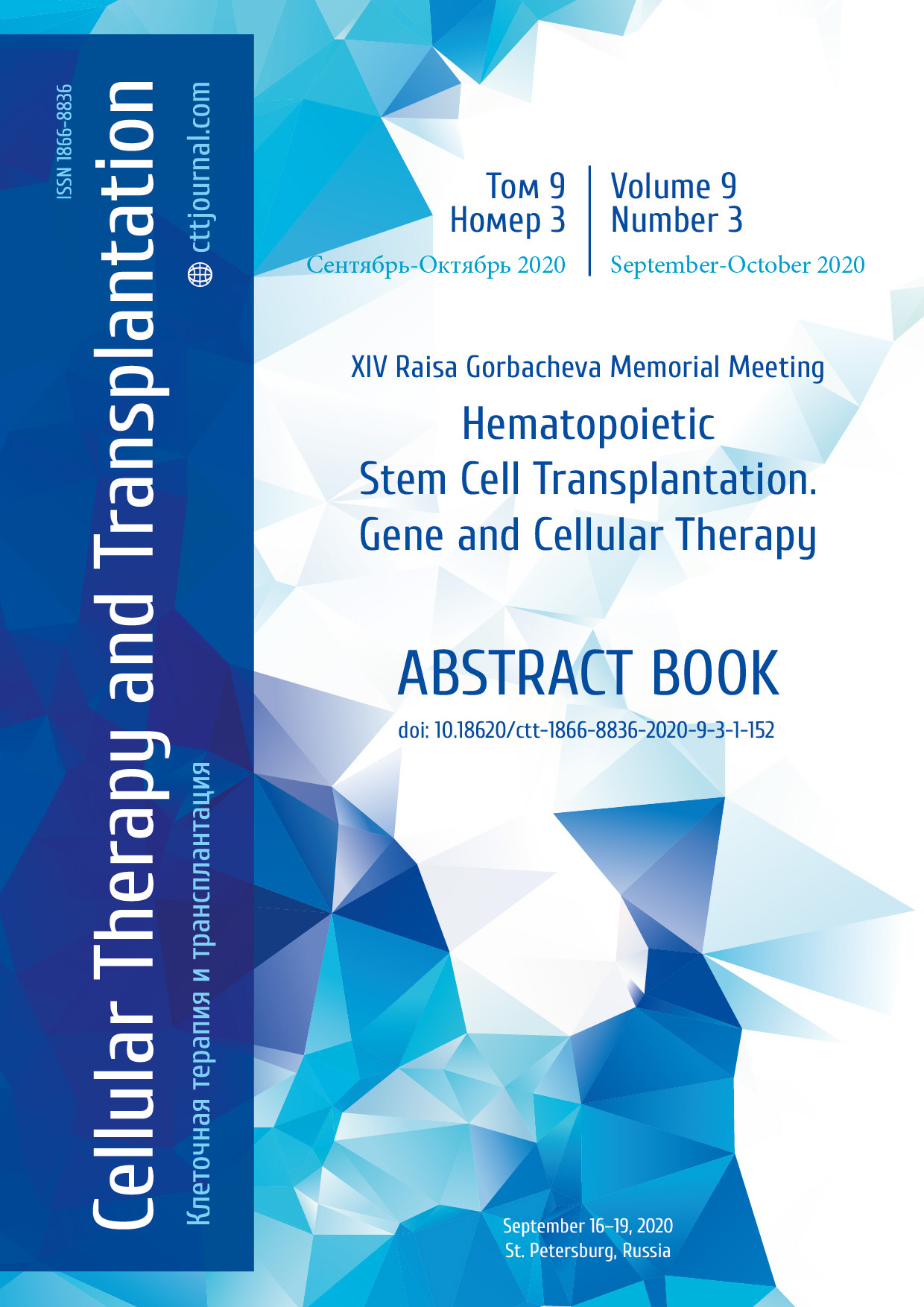PO-04. High-dose chemotherapy with allogeneic hemopoietic stem cell transplantation from haploidentical donor for patients with primary resistant or relapsed neuroblastoma, a single center experience
Ilya V. Kazantsev, Asmik G. Gevorgian, Tatiana V. Iukhta, Andrew V. Kozlov, Polina S. Tolkunova, Daria A. Drozdovskaya, Margarita S. Golenkova, Olga I. Bogdanova, Poina S. Kuga, Alexander N. Shvetsov, Svetlana A. Safonova, Yuri A. Punanov, Ludmila S. Zubarovskaya, Boris V. Afanasyev
RM Gorbacheva Research Institute of Pediatric Oncology, Hematology and Transplantation, Pavlov University, St. Petersburg, Russia
Contact: Dr. Ilya V. Kazantsev, e-mail: ilya_kazantsev@inbox.ru
Summary
Introduction
Neuroblastoma (NB) is the most common pediatric extracranial solid tumor in infants. It is characterized by considerable biological heterogeneity, and its clinical course may vary. However, in spite of complex intensive therapy regimens employed, the overall prognosis of high-risk group patients is still unsatisfactory with 50-60% of them developing primary resistance or relapse. There is yet no consensus on optimal treatment in this group and most of these patients die due to disease progression. As in most cases the re-induction chemotherapy does not lead to long-term remission, immunotherapy is viewed as a feasible consolidation method. Allogeneic hematopoietic stem cell transplantation from haploidentical donor (haplo-HSCT) is among methods able to provide control over residual tumor.
Patients and methods
The present retrospective study included a total of 30 pediatric NB patients (median age 6, range 3-17 years) with primary resistant (n=4) or relapsed disease (n=26) transplanted at the R. M. Gorbacheva Research Institute over 2007-2020. All the patients had a history of 2nd or further lines of chemotherapy achieving complete (n=13) or partial (residual bone lesions by MIBG scan, n=11) responses at the time of transplant. In six cases, there was unresectable gross residual tumor at the time of haplo-HSCT. In all cases, a reduced-intensity fludarabine-based conditioning regimen was used. Most donors were parents (n=27), in three cases haploidentical siblings were enrolled, 16 of 30 donor-recipient pairs were KIR-mismatched. In 11 cases, the transplant was modified via MACS selection (CD34+) or depletion (CD3-19-, TCRab-); in other cases (n=19), graft-versus-host disease (GVHD) prophylaxis was based on posttransplant cyclophosphamide (PTCM). Post-transplant targeted (n=5), immunoadoptive cellular (n=4), and other forms of immunotherapy (immune checkpoint inhibitors, n=5; anti-GD2 antibodies) were used in 16 cases. Four of 16 patients received combined post-transplant therapy.
Results
With a median follow-up of 12 (3-103) months, the 2-year overall survival (OS) and event-free survival (EFS) were 40% and 17%, accordingly. The median EFS was 6 months. A total of 12 patients are currently alive, 8 of them retain therapy response. In 5 of 8 cases, this response lasts for more than 12 (12-103) months. Also, 18 patients died due to disease progression (n=15) or post-transplant infection, due to prolonged cytopenia after primary non-engraftment (n=3). All the patients with long-term response received combined post-transplant therapy. There is no significant difference in survival for KIR-matched vs KIR-mismatched donor-recipient pairs. Also, there are similar outcomes in transplant modification and PTCM groups. The immunotherapy toxicity was acceptable. Only in one case it was ceased due to development of life-threatening complications.
Conclusion
The haplo-HSCT with post-transplant immunotherapy is a feasible option for patients with primary-resistant or relapsed NB.
Keywords
Neuroblastoma, primary resistant/relapsed, allo-HSCT, haploidentical, posttransplant cyclophosphamide.


